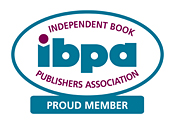This post was supposed to be a rant about too many files, because I was frustrated by having to search through so many when I needed to edit an artifact for my ‘work in progress’ (WIP). Added to that was the pressure of knowing how important it is to have a story outline, and having that knowledge reinforced by a post from the Editor in Residence at Red Room, Alan Rinzler. If that wasn’t enough, then came the panic. I knew I would never successfully finish the revision of my complex story without having a story outline and ready access to all my other WIP artifacts.
Instead of ranting, I’m happy to report that I’ve found a way to keep all my artifacts in a single document. It’s probably not an original idea. All that’s important to me is that the idea dropped into my head just in time for me to slam the door on insanity. Why is a single WIP artifact document so important to me? Because it prevents having to open a slew of files when I get started, and breaking my concentration while I’m working. I’m already going to have two documents open – the revision with my editor’s critique, and the revision I am building. Keeping the artifacts in a single, well annotated, bookmarked, internally linked document is what works for me.
My document structure has at least five major sections, the first of which contains the three versions of the story narrative – the pitch statement, the short synopsis and the long synopsis. I haven’t yet written the long sysnopsis, but no matter – I’ve reserved a place for it.
Section two contains short, single paragraph character narratives; each describing a character in terms of the story. As in, “Jane Doe is the plumber who…” I haven’t yet had to include physical descriptions or personality profiles. So far for me, those types of details reveal themselves in the story.
I’ve decided that I need plot line back-story narratives in addtion to the plot and sub-plot lifecycles (exposition, inciting incident, rising action, climax, falling action, denouement). The narratives and lifecycles are contained in section three. For the action plot line, the narratives are two short back-stories; one each for the collective points of view of the protagonists and antagonists. The romantic plot line of this story has no real protagonist or antagonist; however both characters assume both roles over the lifecycle of the plot. So the two back-story narratives are for each of the two characters and reveal the motivations and events that brought them into the romantic story line.
What about the chapter outline for the story? It’s in section four. Isn’t that wild? An outline within an outline. But it works for me. Each item in the story outline is annotated with plot and subplot lifecycle tags. I’ve already outlined the prologue and first chapter so I know this approach is working. The only rule I’ve set myself is that if it doesn’t make sense to annotate an item, then it doesn’t go in the outline. I also annotate an item when it is a chapter transition to insure that they exist for all chapters.
The last of my mandatory five sections is the scene-by-scene storyboard. The only rule I have for the storyboard is that each scene must correspond to at least one outline item. Of course, multiple scenes can correspond to the same item. For me, working with the storyboard and the outline is where the excitement happens. I’m finding that I love the back and forth between the two as the story unfolds. Split-screen with this doc is epic! Because I’m using the document structure to revise a work, I can annotate the storyboard scenes indicating which are existing scenes, which are to be updated, adapted, or which are new – and I can keep counts.
For this WIP, the doc has a couple of extra sections – one for related, future works; the other for diagrams and pictures. The content of the extra sections is not important. Giving myself permission to include all the WIP artifacts – for any WIP – is the thing. Maybe that’s what I should call it – the WIPA doc. Works for me! Now if you’ll pardon me, I’m going back to the drawing storyboard. Happy Thanksgiving!


